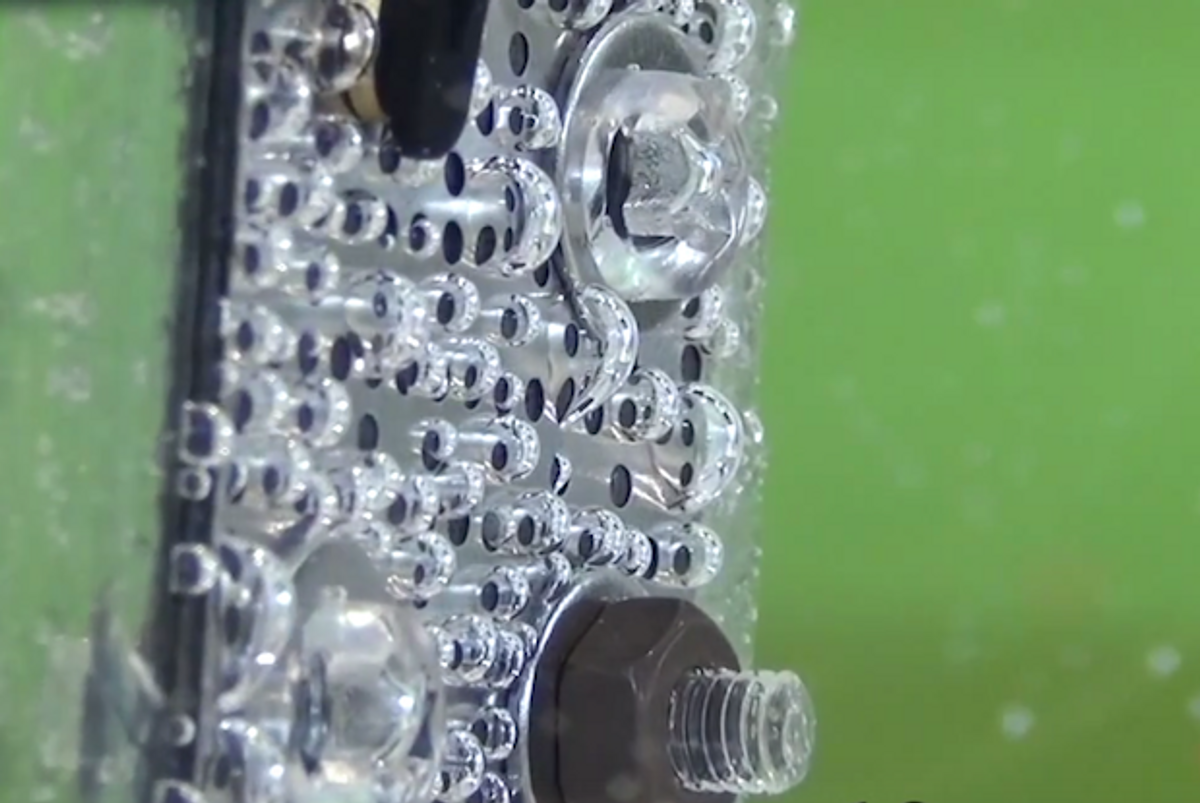The adaptability and inherent safety offered by soft robots is pretty great, and we’ve seen lots of examples of all the crazy things that you can do when you don’t have to worry about giving your robot bones. Getting these boneless robots to move is tricky, but turning water into gas and then back into water again may offer a compact, efficient, and clever solution.
Just to remind you how cool soft robots are, here are a few of them:
Harvard’s Explosive Jumping I-Don’t-Know-What
Getting these soft robots to do stuff, as you can see from the videos, usually means an external air source connected to the robot by tubes, an internal gas generator, a battery powered air compressor, or (and this is by far the best method) explosions. For practical use, most of these things are probably not going to cut it: an air tether is obviously problematic, gas generators and explosions are of limited use, and that backpack air compressor is fragile, especially once you figure in all the tubing and valves and whatnot.
Researchers from Okayama University posted a video this week showing their “tube-free pneumatic rubber actuator” in action. It’s not a very compelling name, but watch what it can do:
What’s going on here is both very simple and very cool: water is being cracked by a catalyst to create hydrogen and oxygen gas, and then the process is reversed to turn that gas right back into water again over the course of just a few seconds. This results in a pneumatic actuator that’s essentially a gas generator that doesn’t use up any fuel when you run it, only electricity. It’s better than using chemical gas generators because there’s no limit on the number of actuations you can do (assuming the catalyst’s performance doesn’t change). It’s also better than an air compressor because it has no moving parts, is completely self contained, and isn’t wasting energy every time it vents compressed air to deflate itself. Seal this thing up inside a soft robot, feed it some electricity, and you’re good to go pretty much forever.
The video, from the Suzumori Endo Robotics Laboratory, links to a 2013 paper presented at the IEEE/ASME International Conference on Advanced Intelligent Mechatronics, although the system shown in the video looks a lot newer than anything the paper talks about. But without any updated information (yet), we’ll pull a few technical details from the 2013 paper about how this all works. It’s based on a proton exchange membrane (PEM) electrolyzer immersed in water and sealed inside a container. When current is run through the membrane, two H2O molecules get split into two H2 molecules and one O2 molecule, and the pressure inside the container increases. With the current off, the membrane acts like a fuel cell, combining two H2 with an O2 to get two H2O molecules plus electricity, which is fed back into a rechargeable battery.

The generation speed of the gas is controlled by the voltage that’s run through the proton exchange membrane cell. Here’s a graph showing some of the experimental results from 2013; basically, 5 amps of electricity at 2 volts will generate between 4 and 5 kPa of gas over a period of 5 or 10 seconds, and that pressure will drop back down to zero over 10 seconds or so as the gas gets turned back into water:
Five kPa works out to be a bit less than 1 psi, which is only 5 or 10 percent of what Harvard’s soft robot uses to creepily walk around and lift stuff. At this stage (as of two years ago, anyway), we’re just looking at a proof of concept, and once again, we’re not yet sure how much further along the system in the video is, if at all. We do know that the researchers were optimistic about it: while noting the relatively low pressure range, they were confident that they’d be able to increase it by increasing the surface area of the membrane. The overall system works at room temperature, it’s silent, efficient, and suitable for miniaturization.
We’re hoping for a bit more information on the current state of this research, but meanwhile, all the details we have can be found in “A New Mobile Pressure Control System for Pneumatic Actuators Using Reversible Chemical Reactions of Water,” by K. Suzumori, A. Wada, and S. Wakimoto.
Evan Ackerman is a senior editor at IEEE Spectrum. Since 2007, he has written over 6,000 articles on robotics and technology. He has a degree in Martian geology and is excellent at playing bagpipes.




